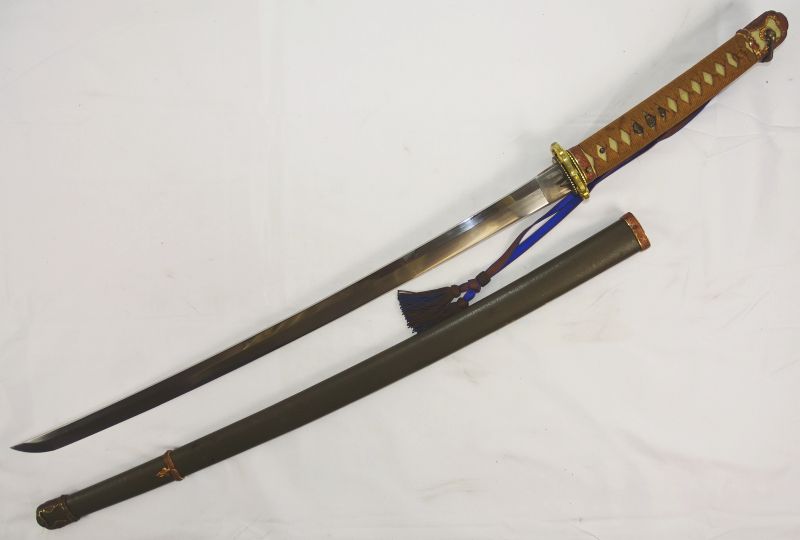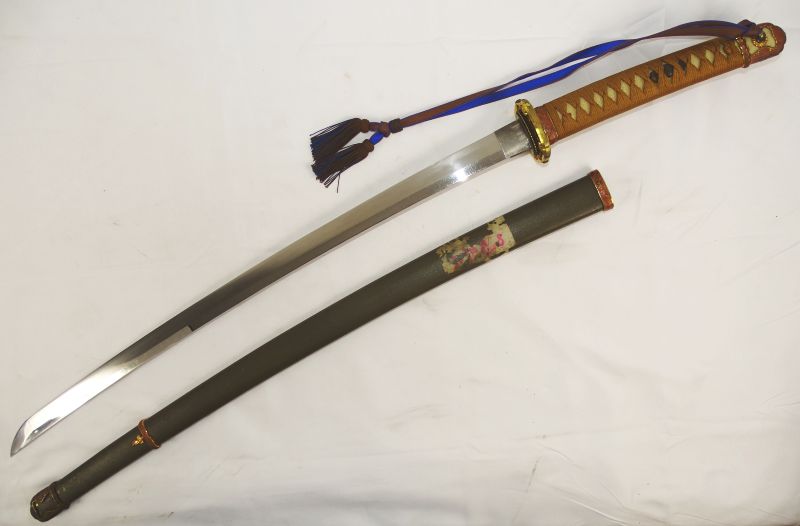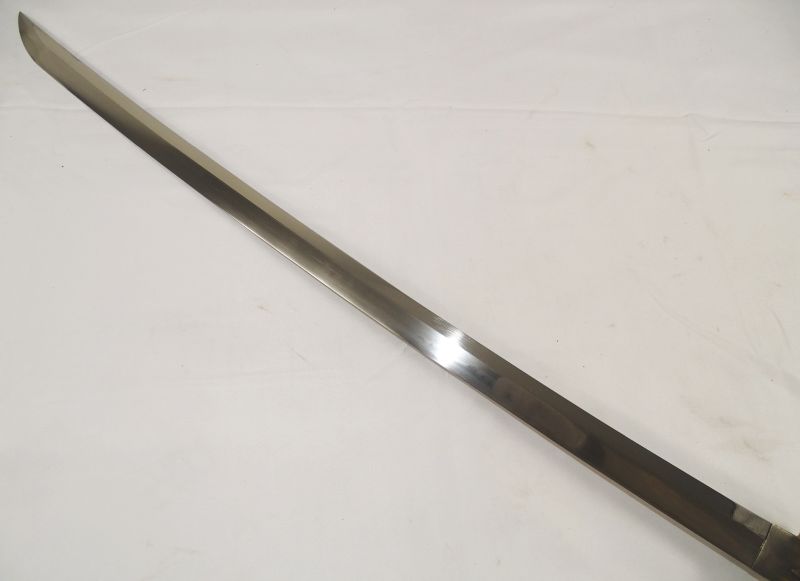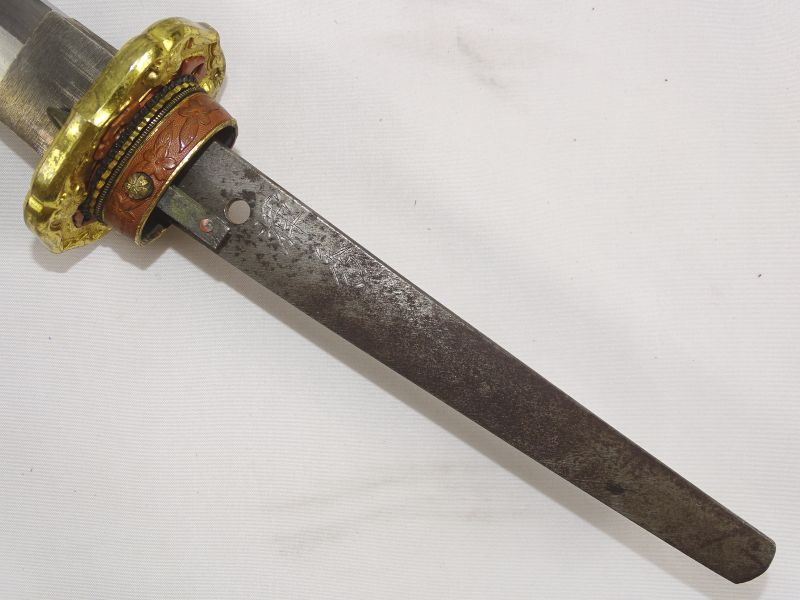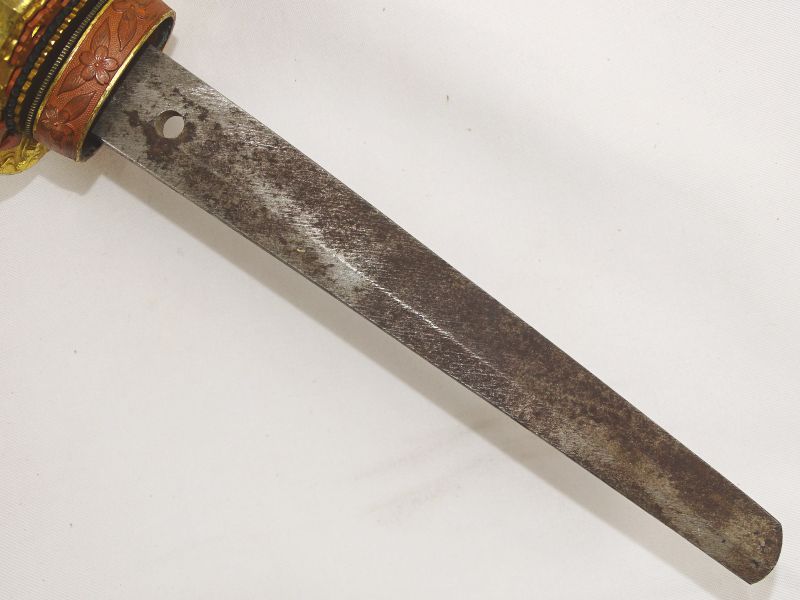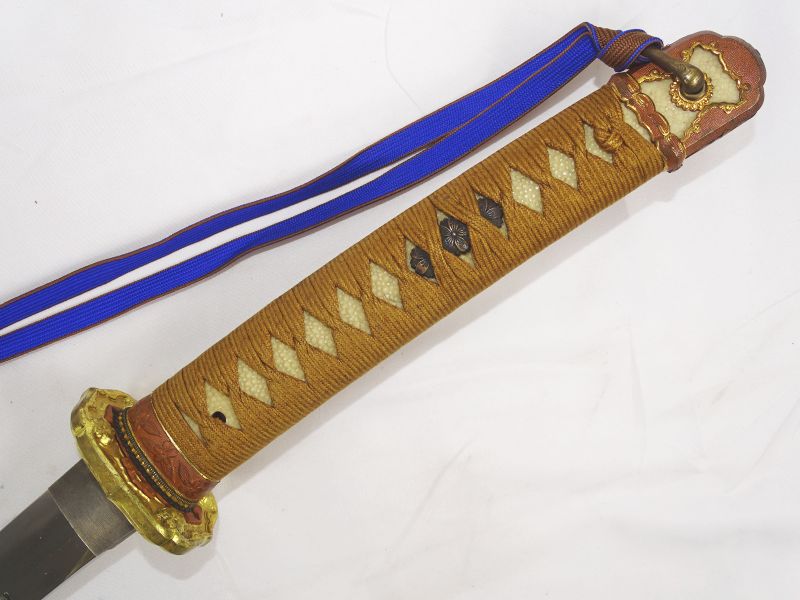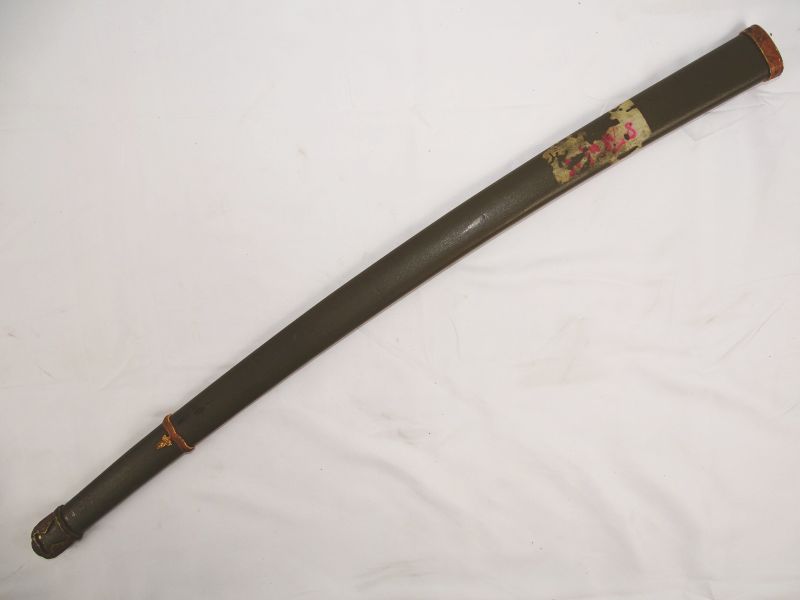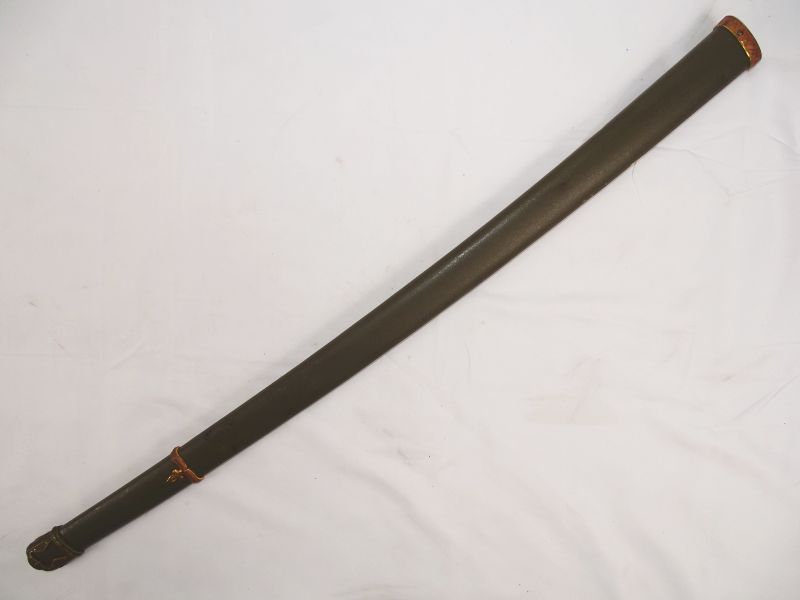Signed WWII Army Officer Shin Gunto Sword with Matching Numbers
$1,475.00
The sword has an overall length in the scabbard of approximately 39 inches with a blade length of approximately 25 1/2 inches. The blade has some scratches but it is generally bright and without nicks or chips, the temper line is light . The tang is signed “Teruhide” and sword components bear the matching number of “31”. The tsuba is solid with gilt finish and cherry blossom motif. The grip is covered in light skin, with a wrap in the traditional fashion in golden silk tape. Beneath the wrap on each side are the standard military menuki with three cherry blossoms. A very fine officer’s sword title is tied to the pommel ring. The metal scabbard retains most of its original paint, with some scuff marks and the remnants of an old label on one side. The scabbard produced without the upper mounting ring. Overall the sword is in excellent condition. The following is from the website “Japaneseswordindex.com” regarding swordsmith “Teruhide”: ”
“Ishido Teruhide (b 1900; d 1982) was the 10th and last generation of the Ishido Korekazu line of swordsmiths in Tokyo (Toto). He was a descendant of very famous Musashi Daijo Fujiwara Korekazu. During WW II, he made many swords for high ranking military officers and also made blades for civilians. Ishido Teruhide was ranked betseki in the 1943 swordsmith rankings by the Nihon Token Tanrenjo and the Nihon Token Shinbunshi. Ishido Teruhide signed with both a long mei and a two character mei. Teruhide also signed simply Ishido saku. On some of his swords, Teruhide used a kao (carved personal seal) in addition to his signature (mei). Ishido Teruhide also signed as Ishido Mitsunobu also using the same kao as with his Teruhide mei. It is possible that the Mitsunobu signature is a dai mei signature (a signature where one smith signs for another). It could also be the case that both swordsmiths employed the same professional mei carver and that these signatures are examples of nakirishi mei. While these are possibilities, I think it is unlikely and that Teruhide and Mitsunobu are most probably the same smith. I doubt that a swordsmith would carve his personal seal (kao) if signing for another smith. It has been suggested that he signed Teruhide when making blades by the traditional method but signed Mitsunobu on non-traditionally made (sunobe) blades. His signature (mei) is sometimes translated as Sekido Teruhide and Sekido Mitsunobu, although Ishido is the preferred reading.
An Ishido Teruhide blade was awarded HOZON origami in 1997 by the NBTHK and are judged as true gendaito (kindaito). His blades are found in standard shin-gunto mounts, Showa Era civilian buke’ zukuri style mounts, kai-gunto mounts and shirasaya.
After the war Teruhide made wood cutting planes rather than swords in order to earn a living. The planes he produced cut well and sold for about 2,000,000 Japanese Yen. The company continues today making tools and wood planes.”
Sold!


